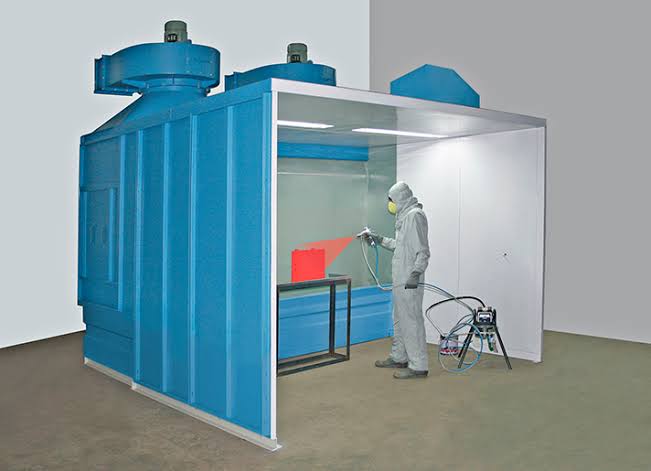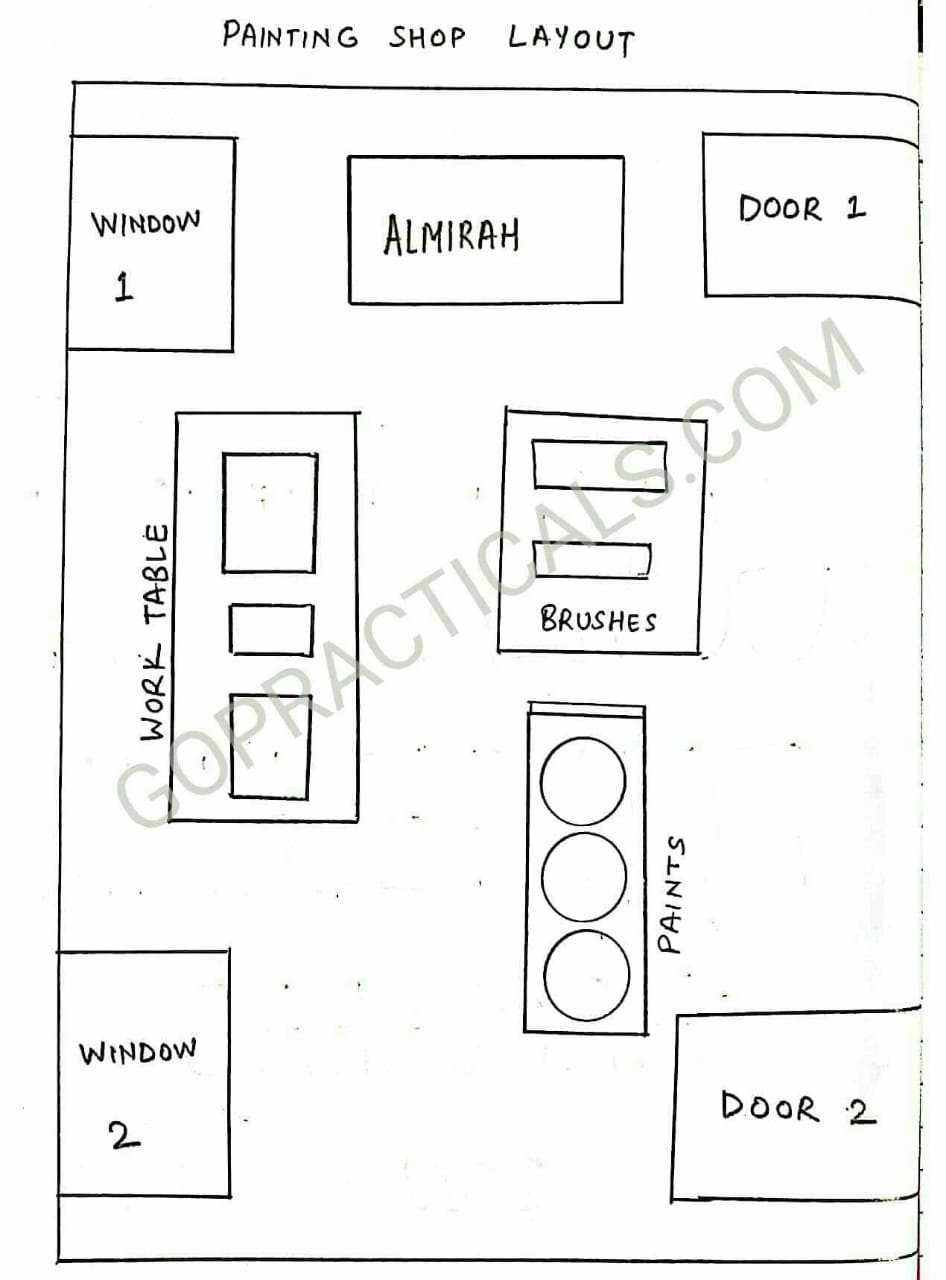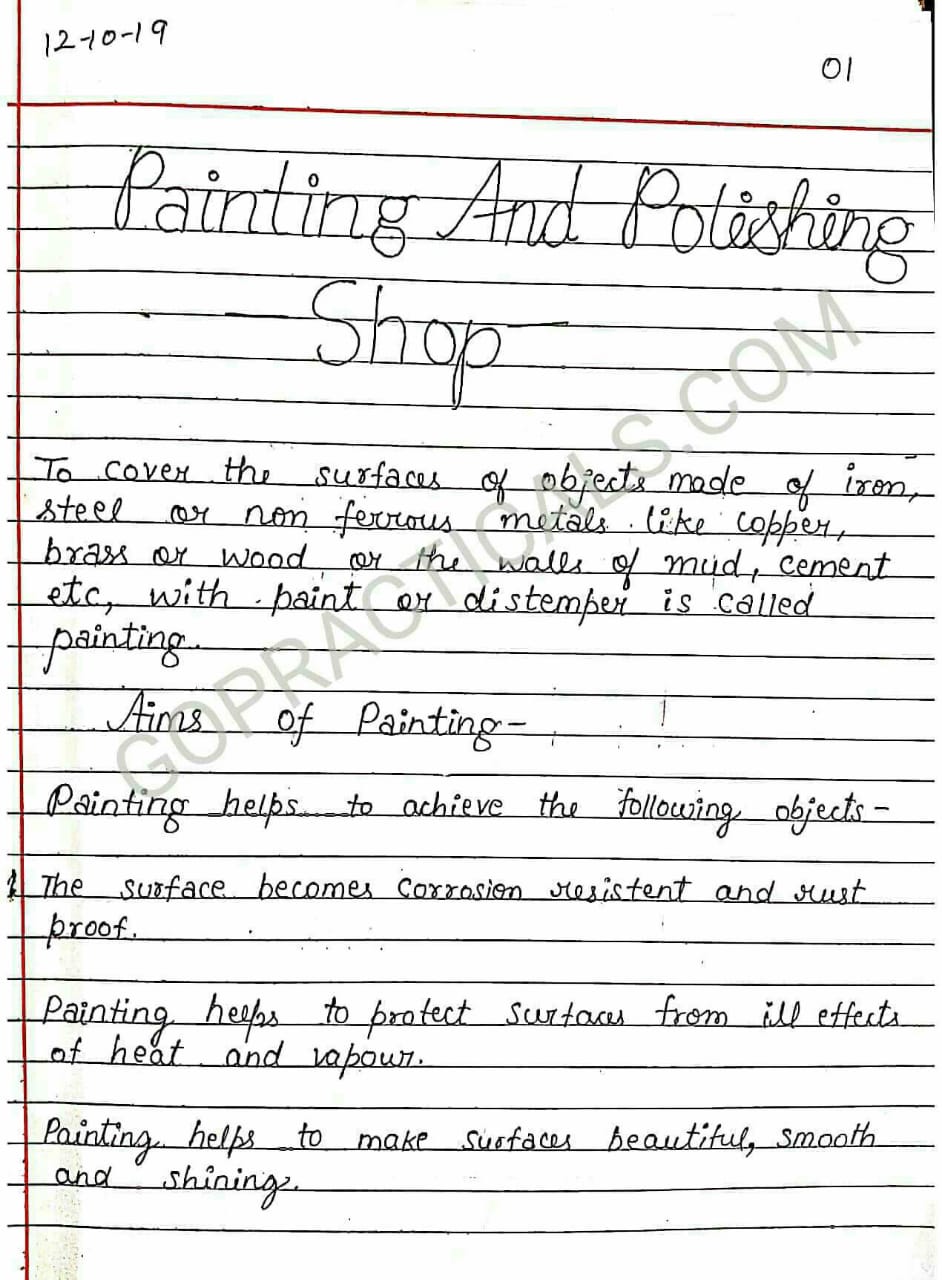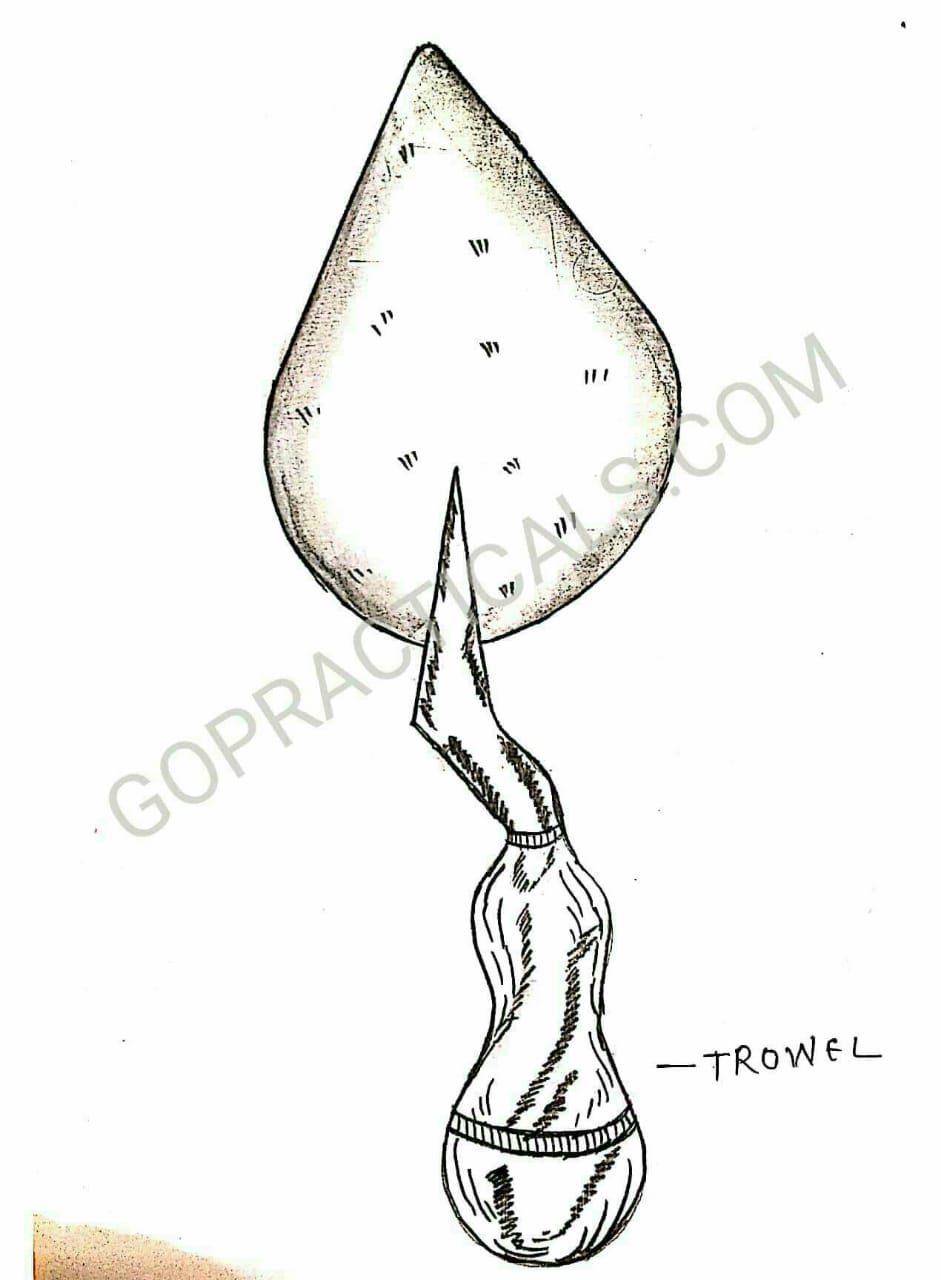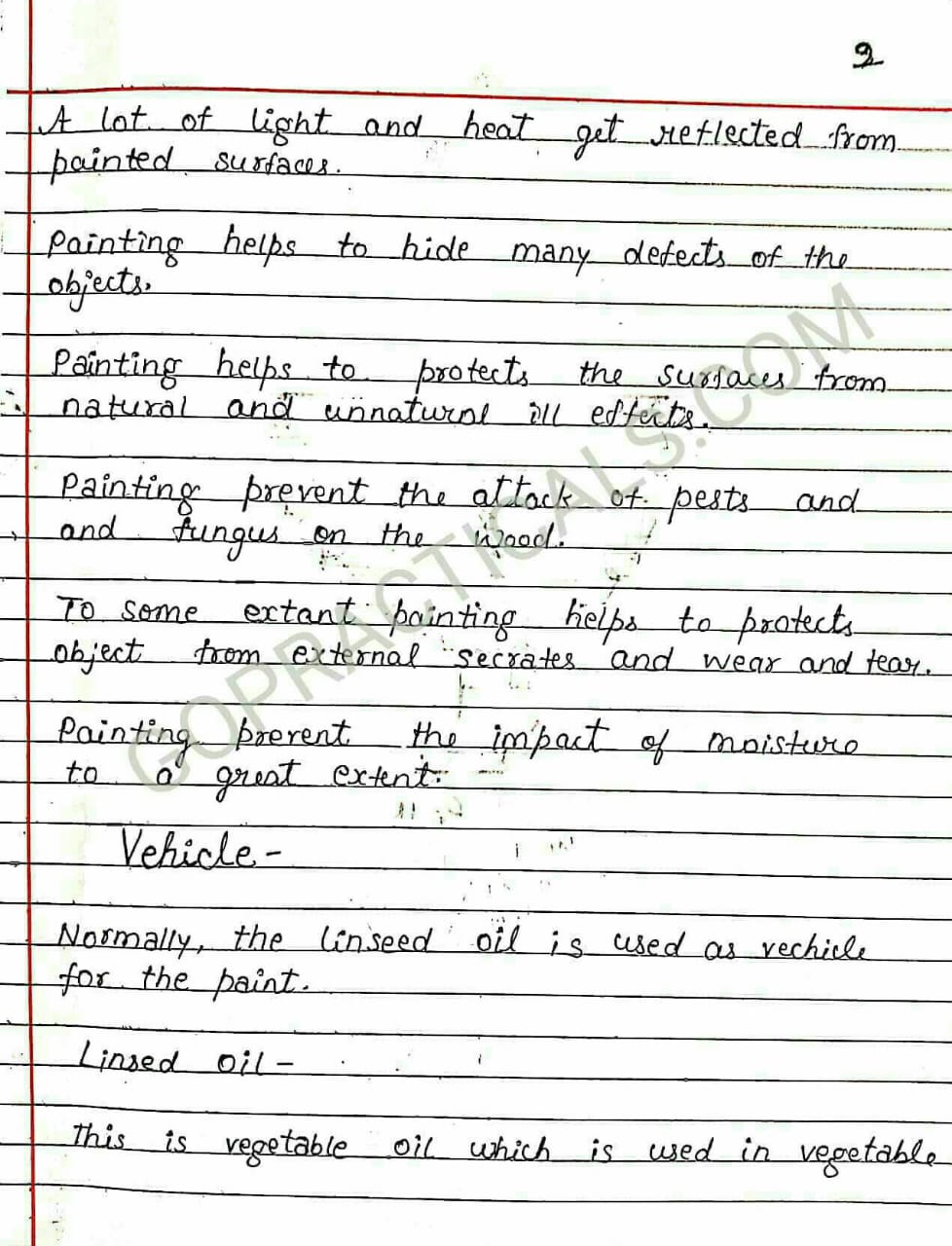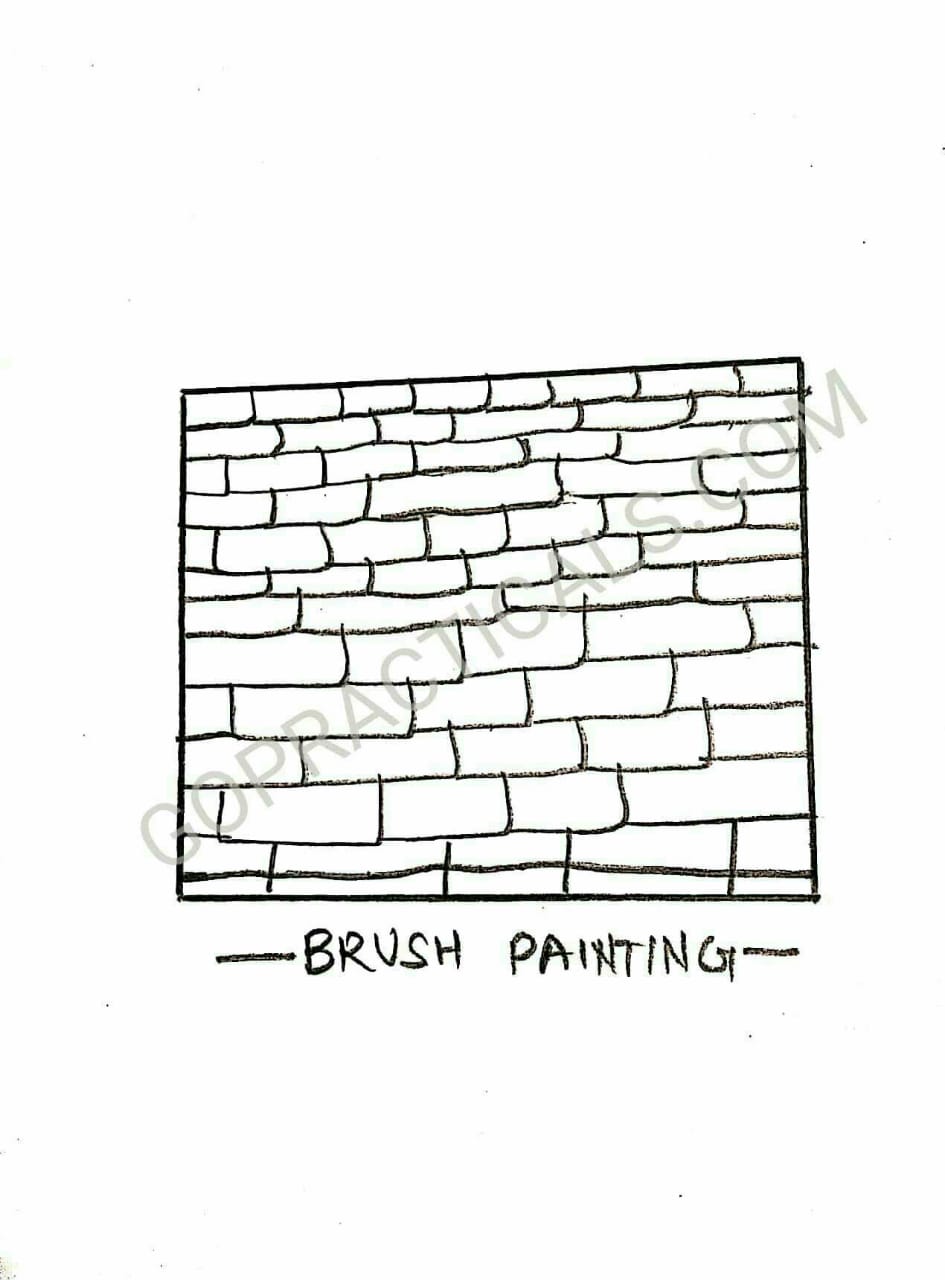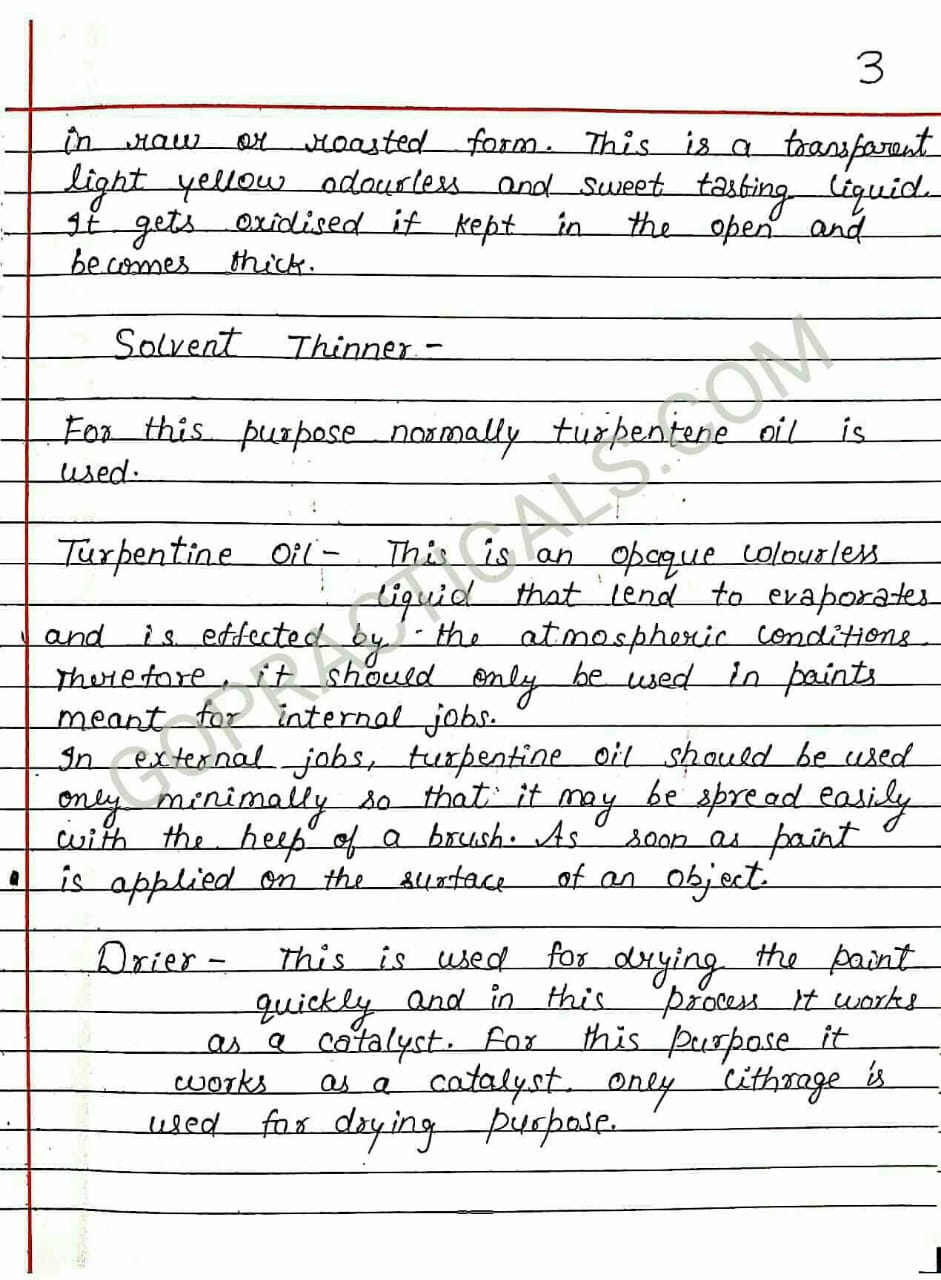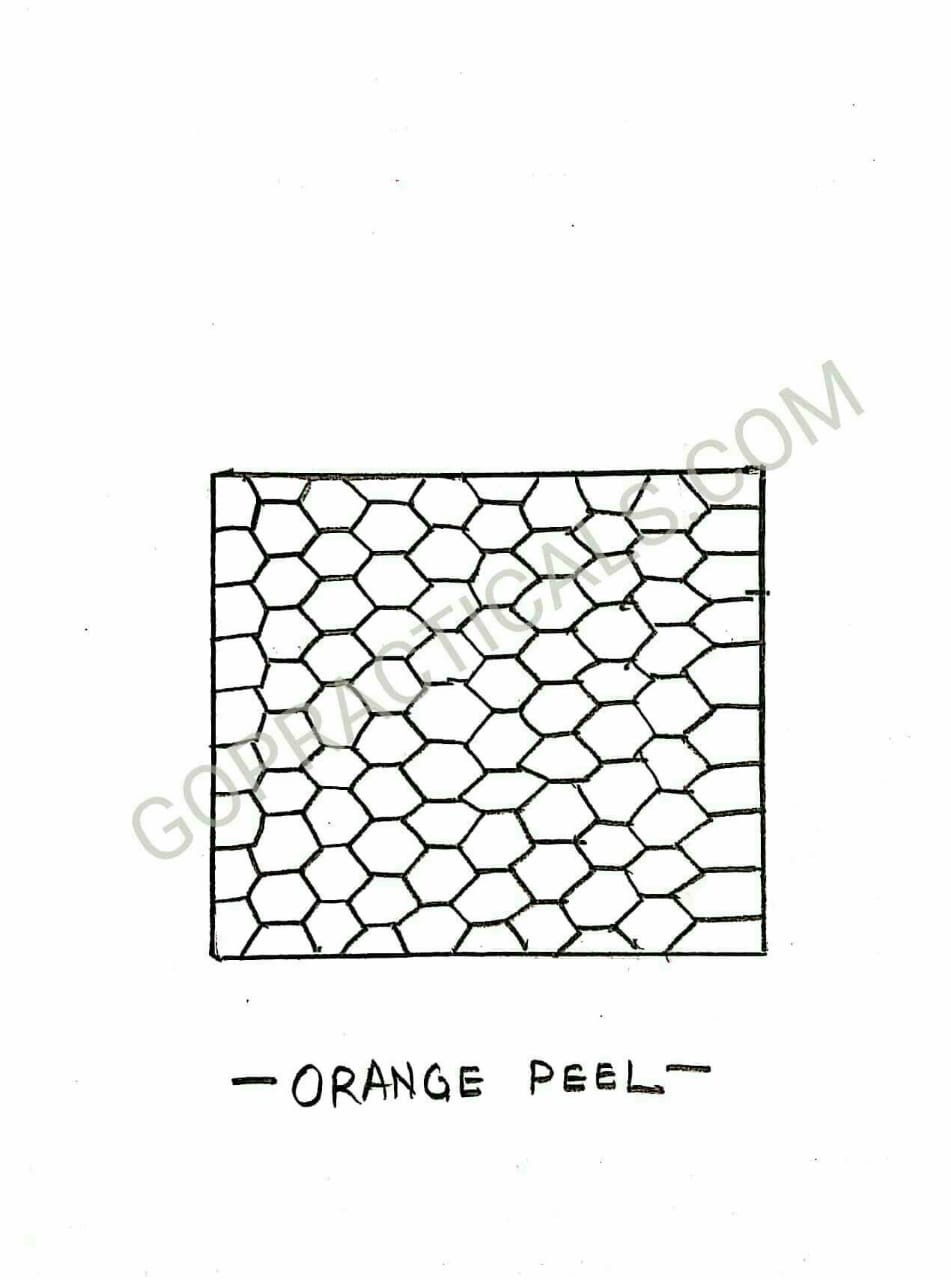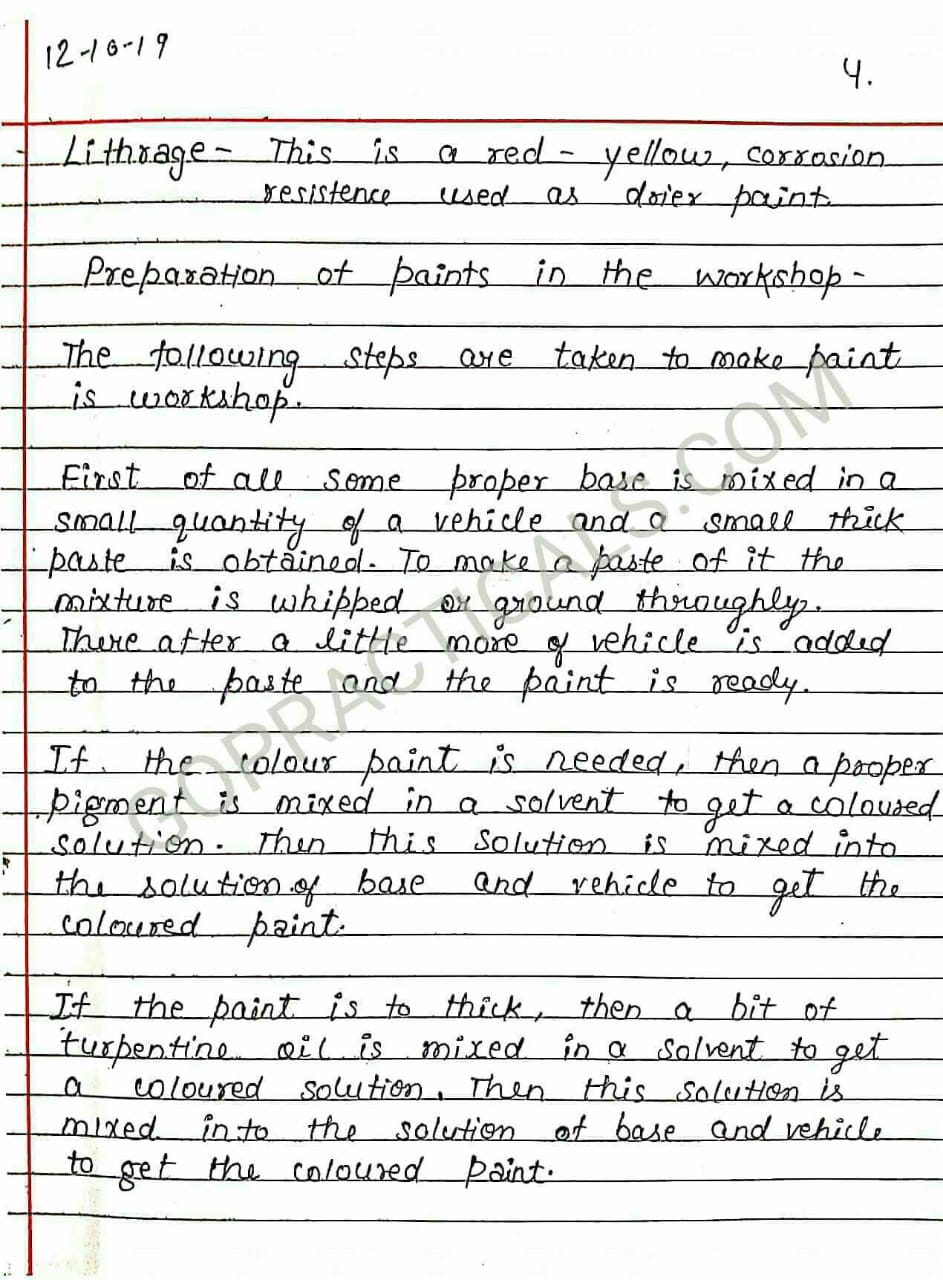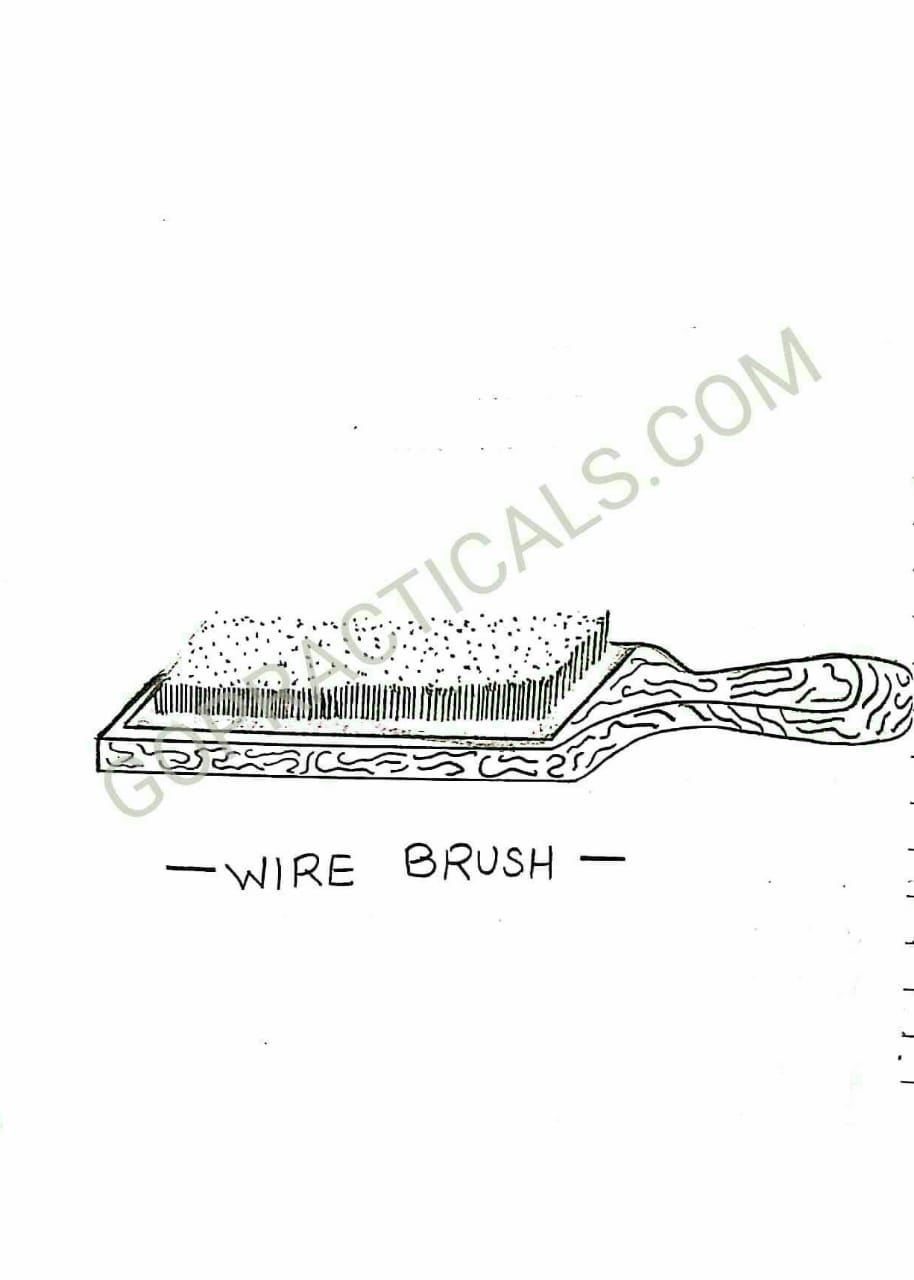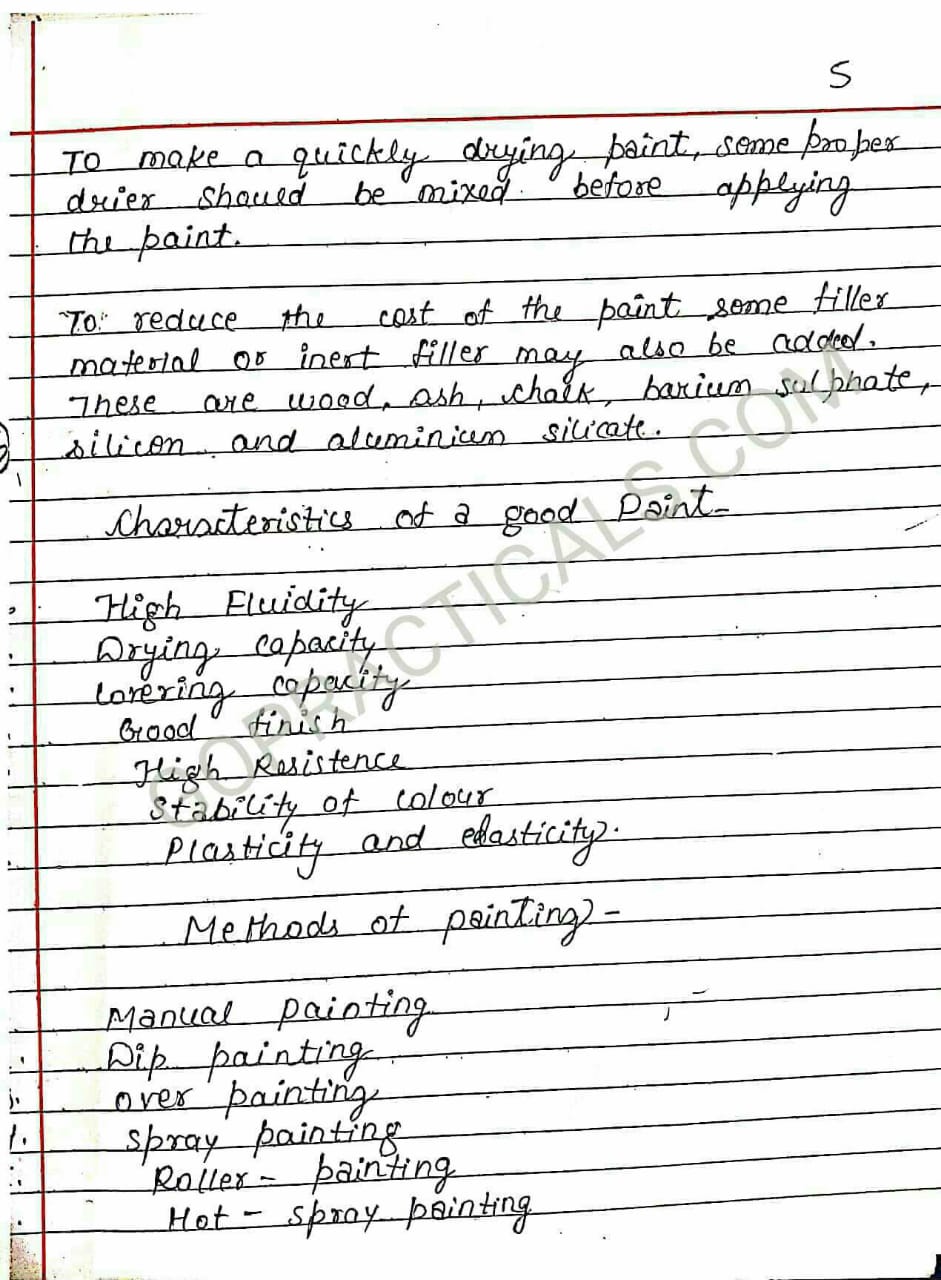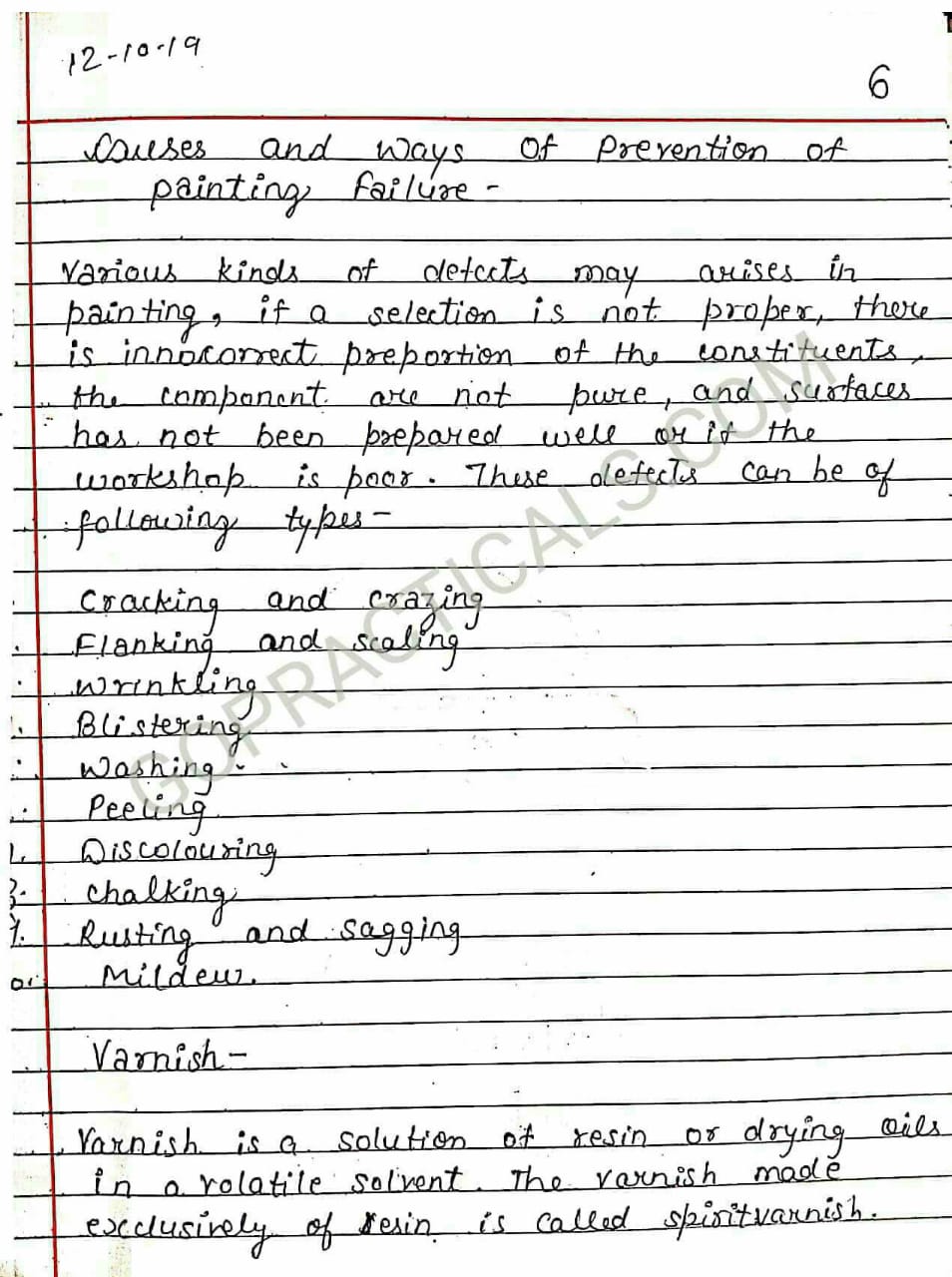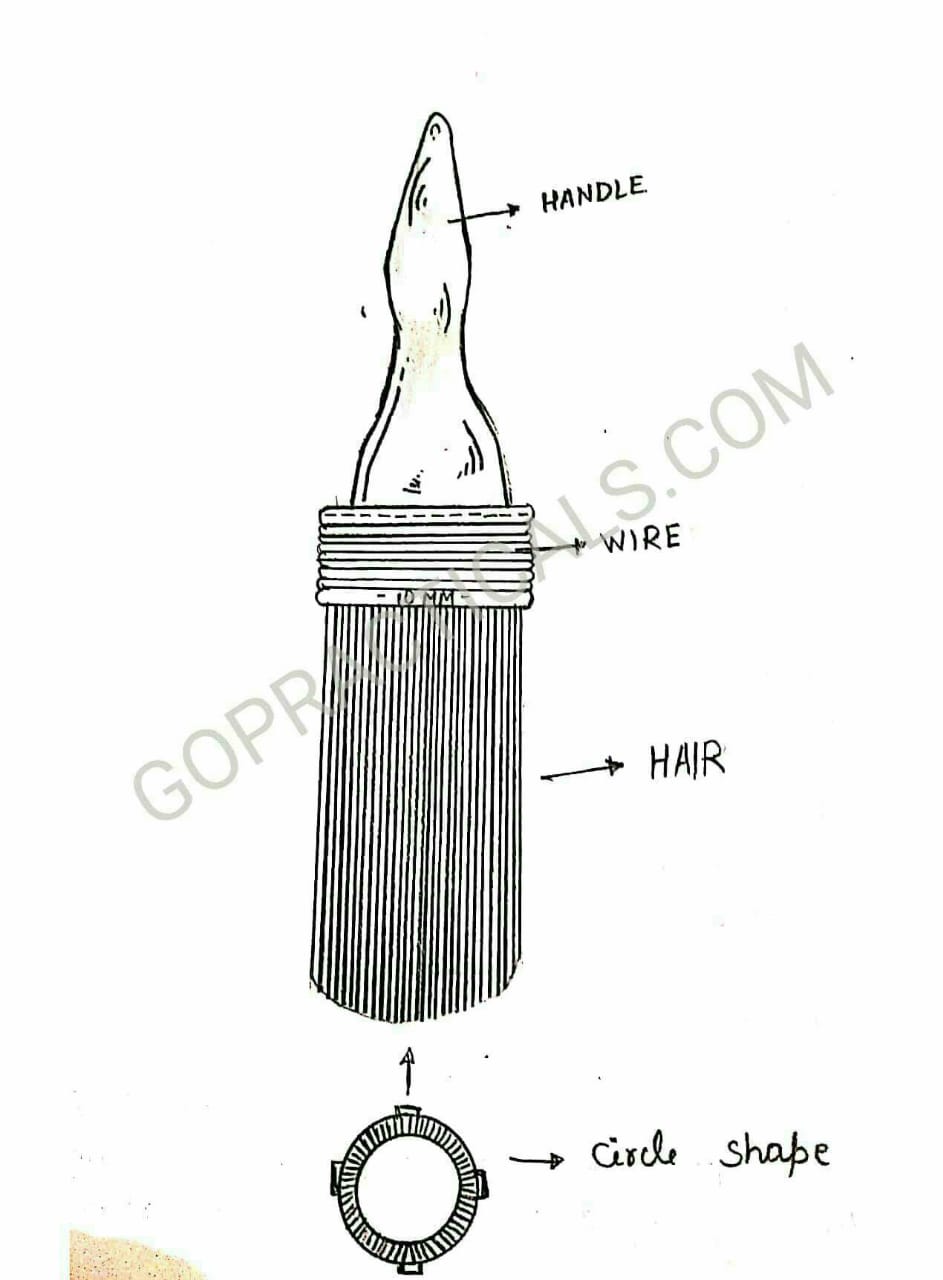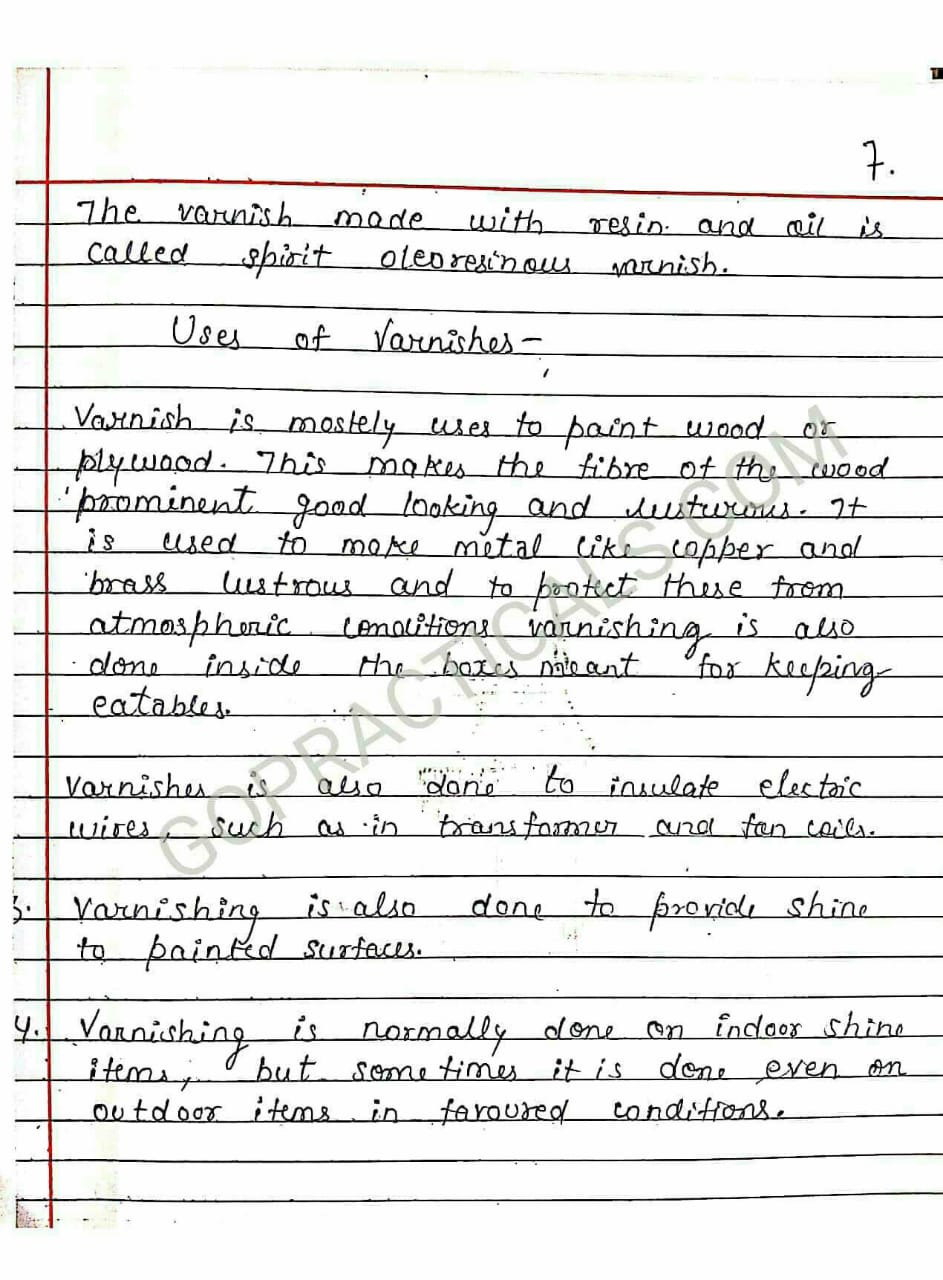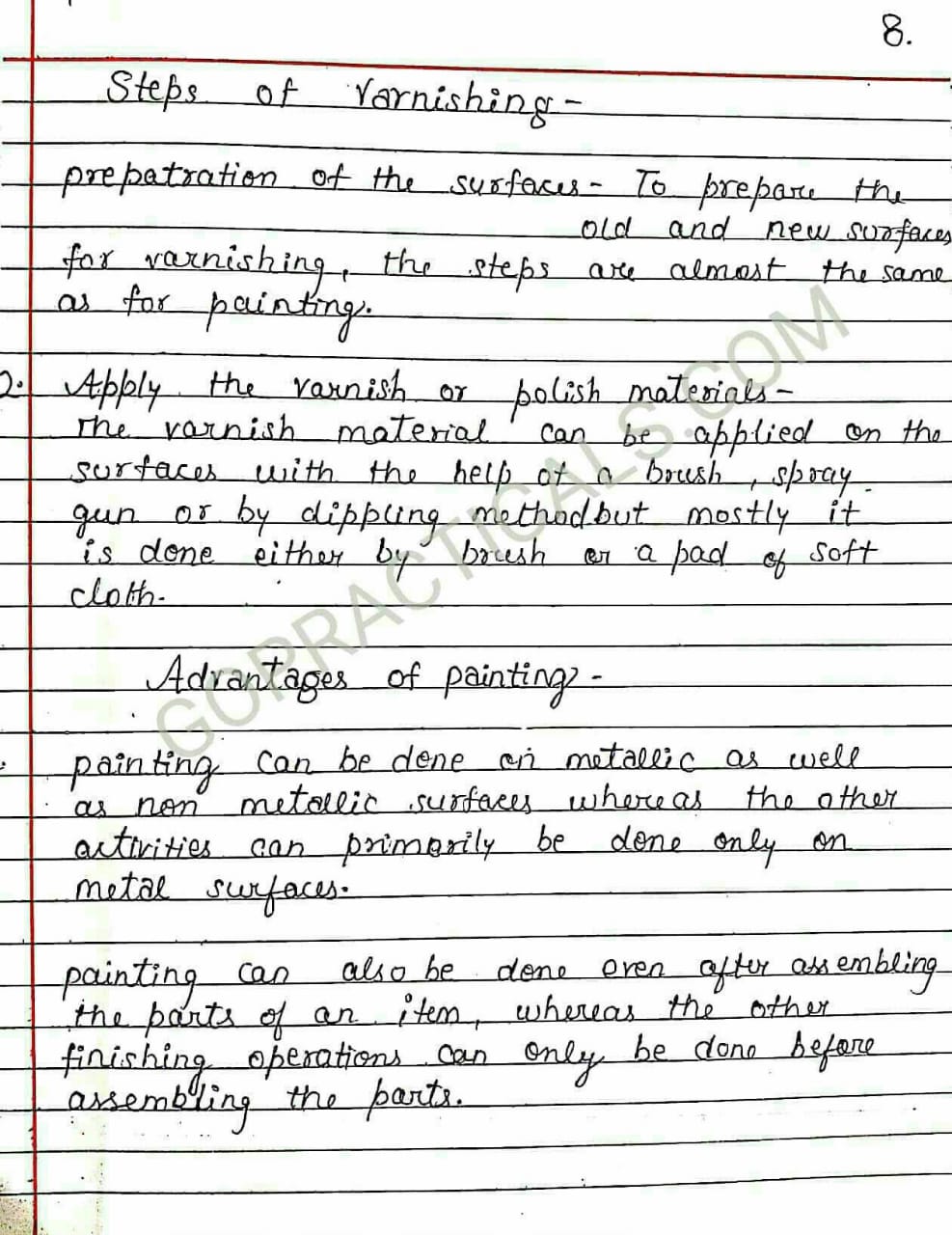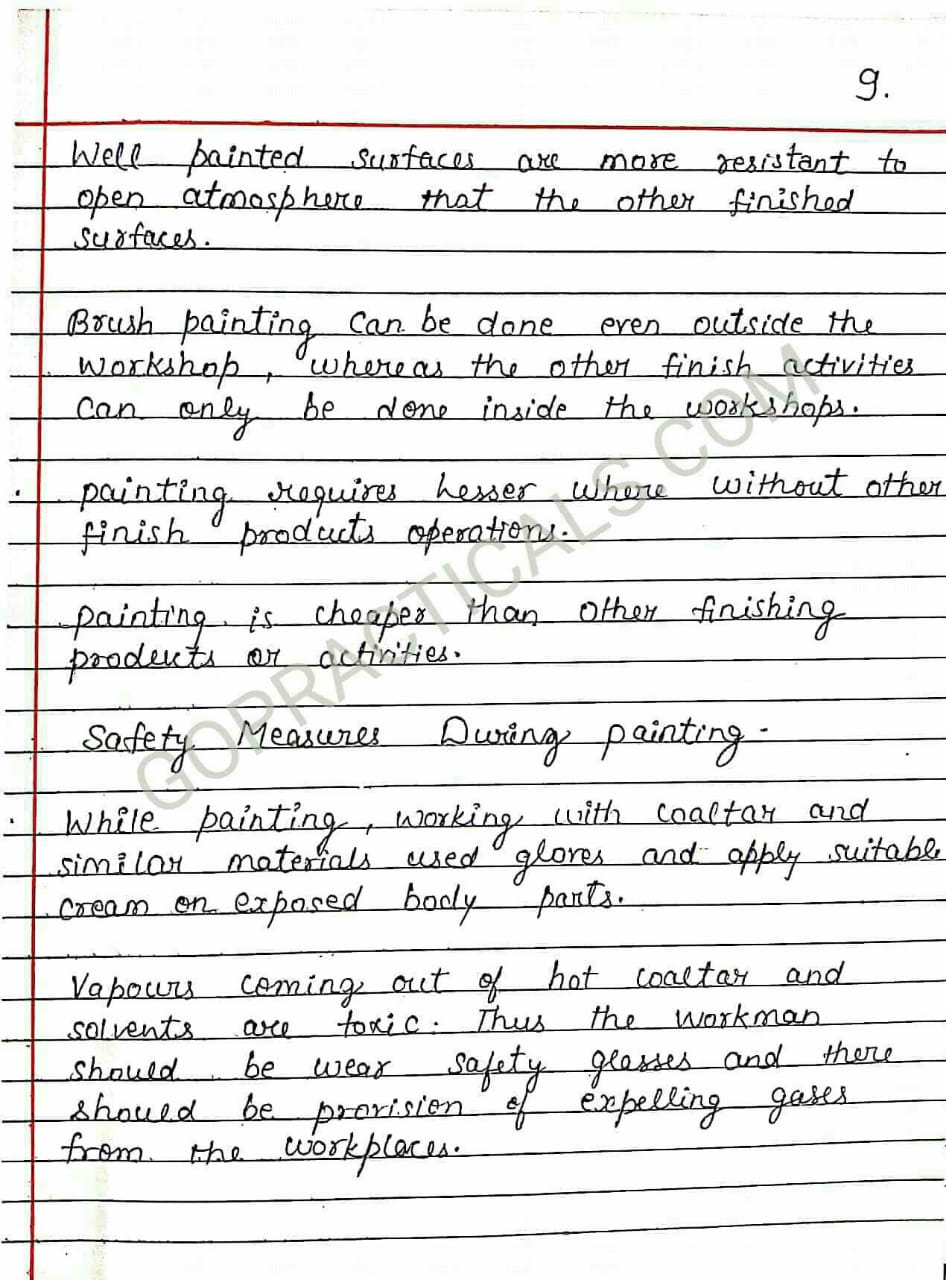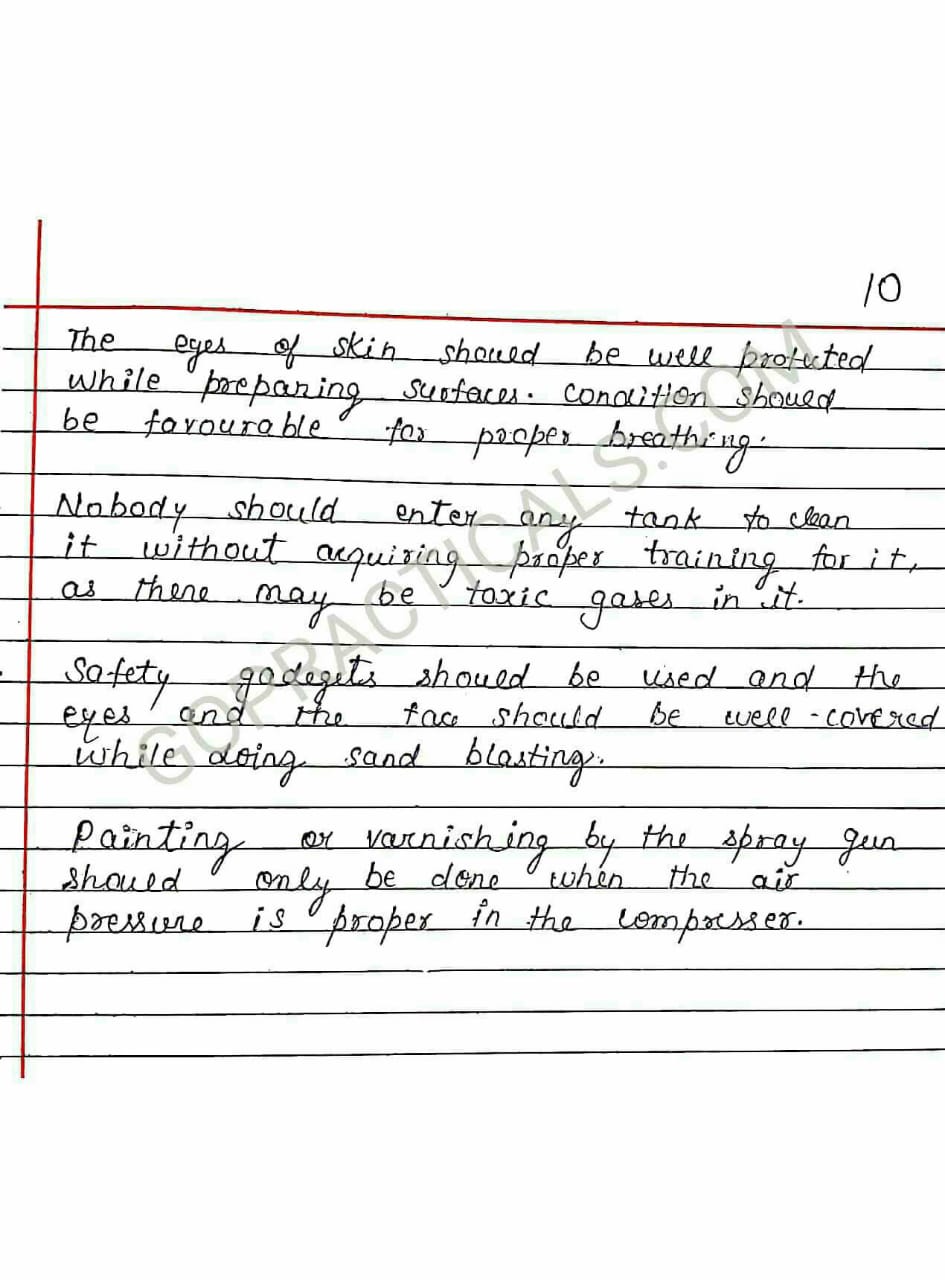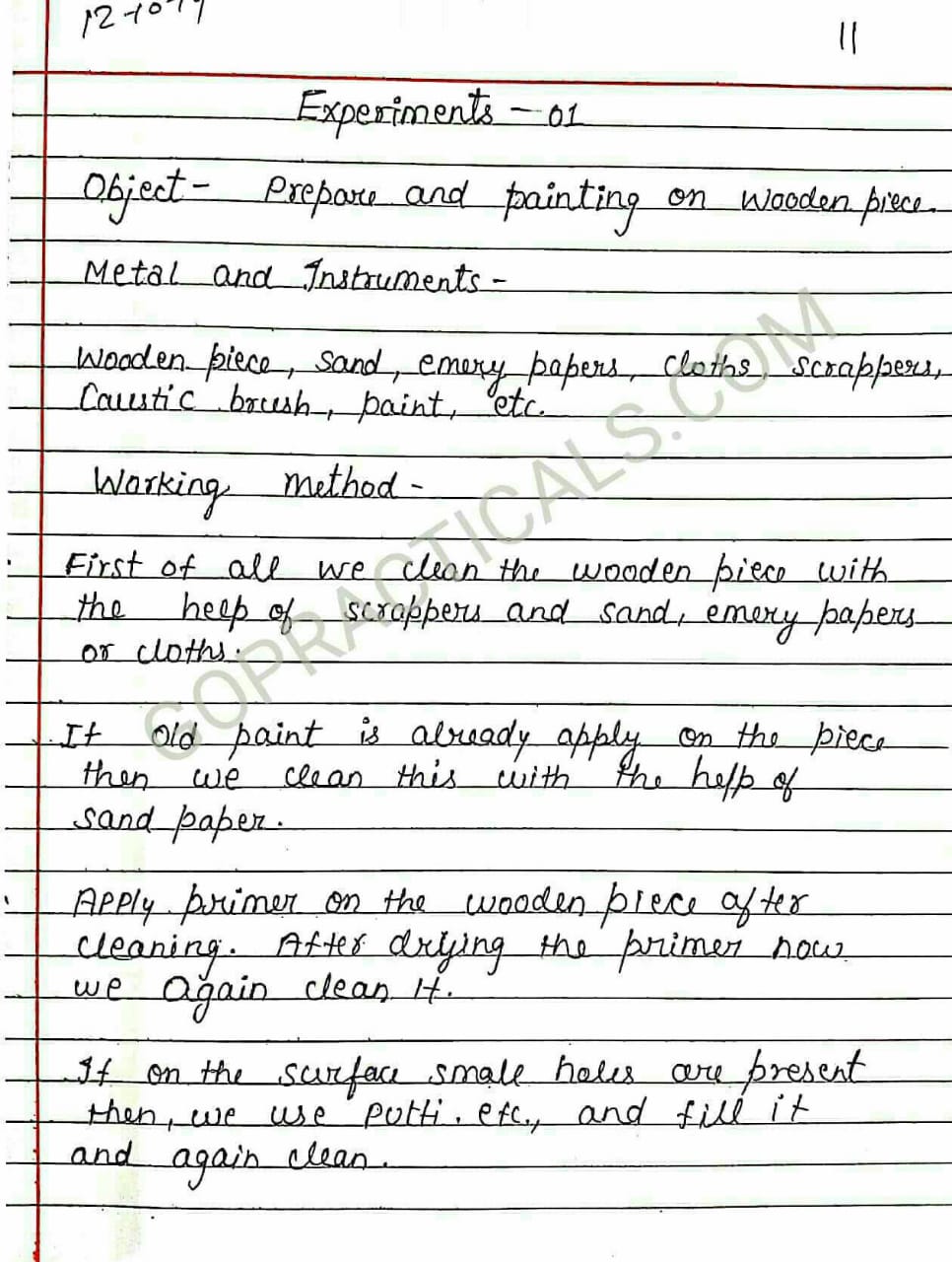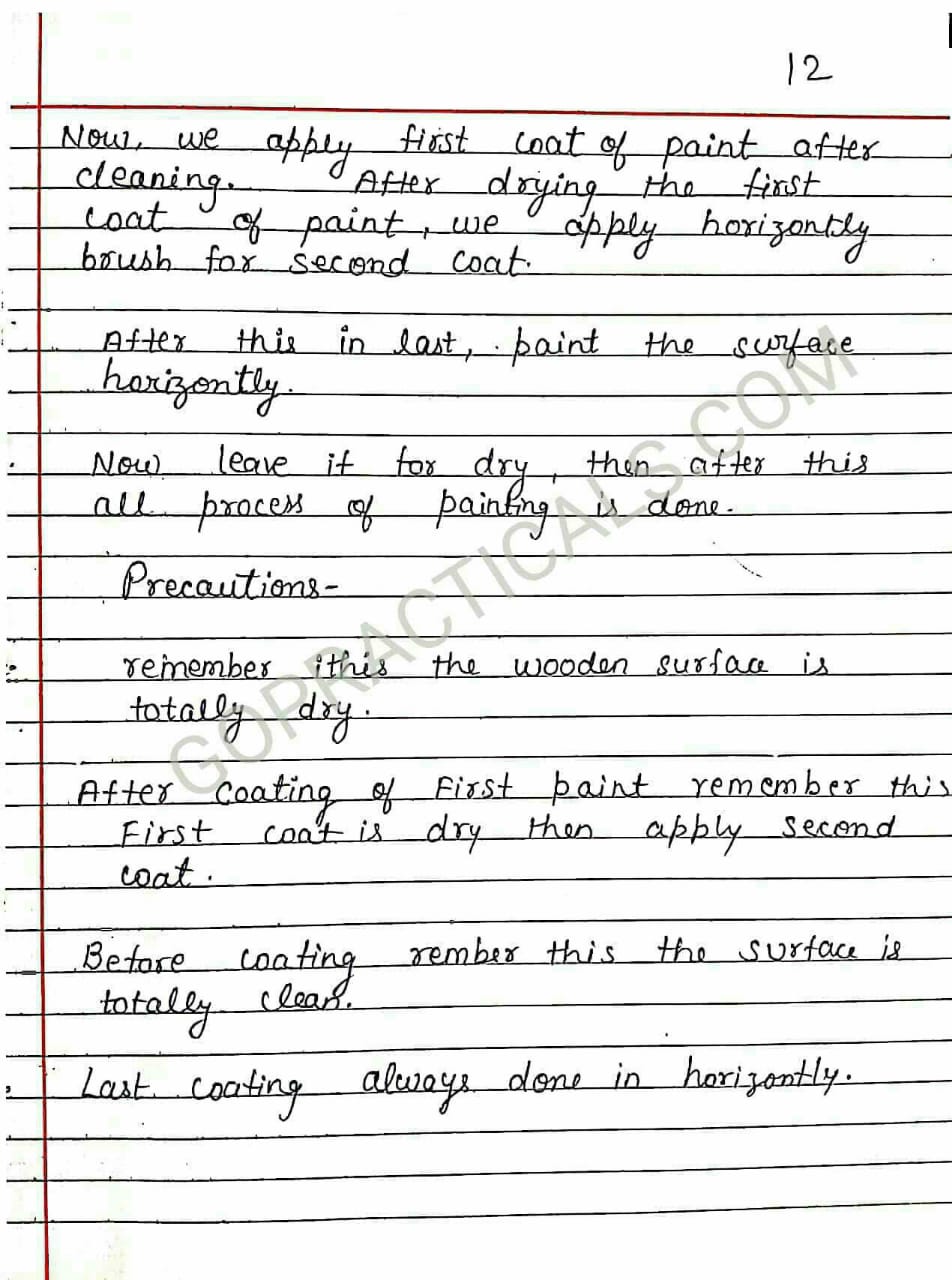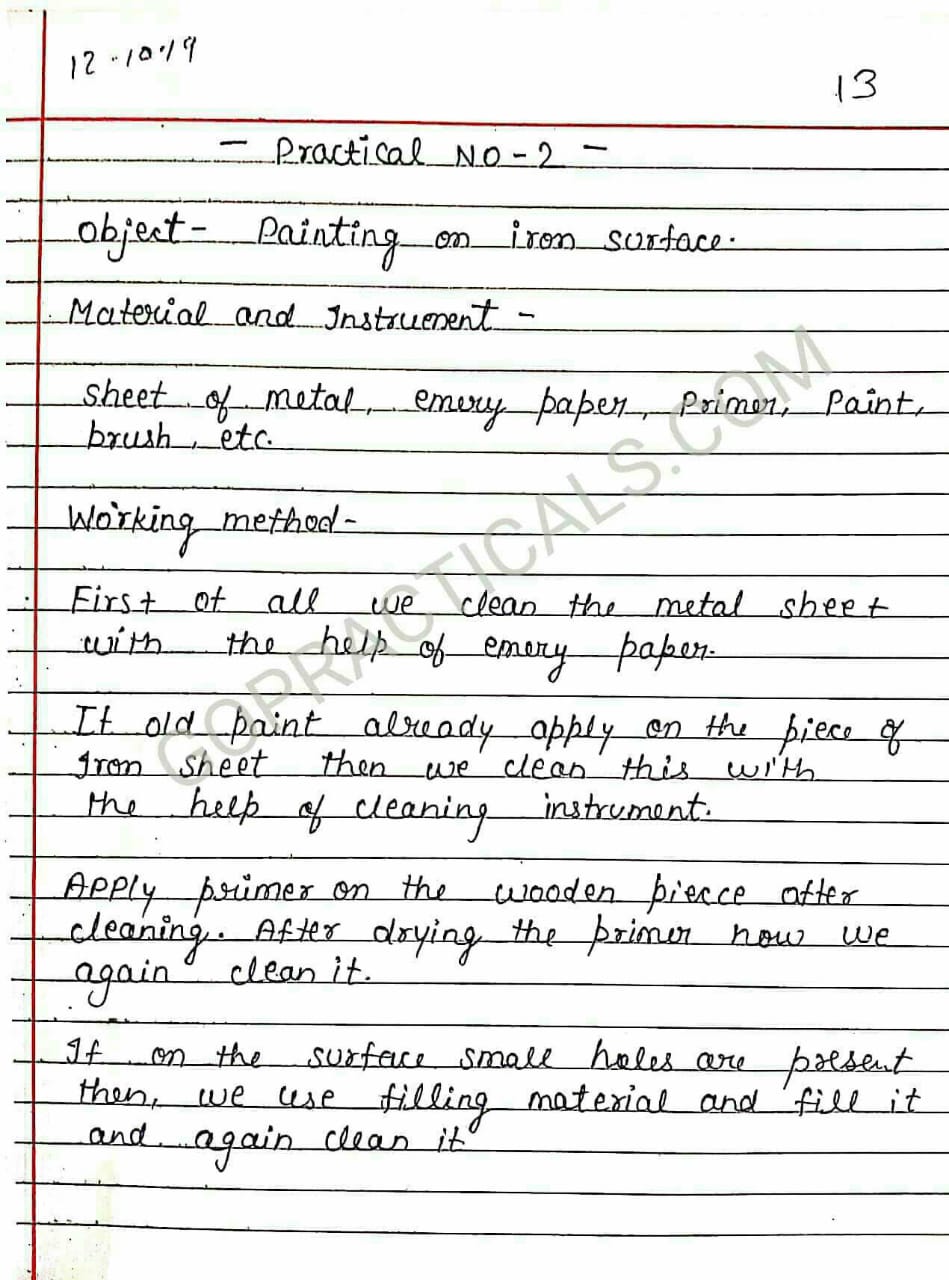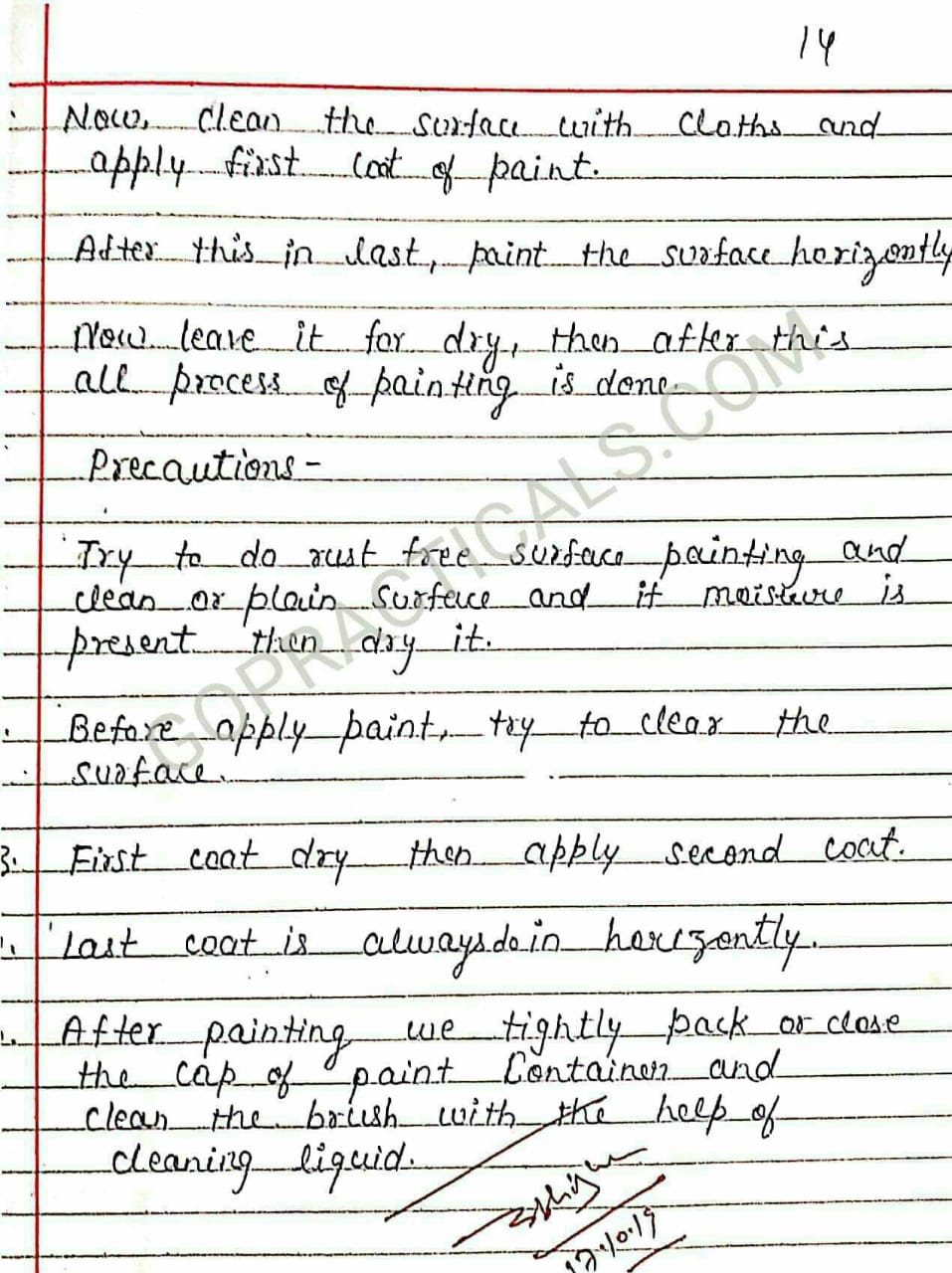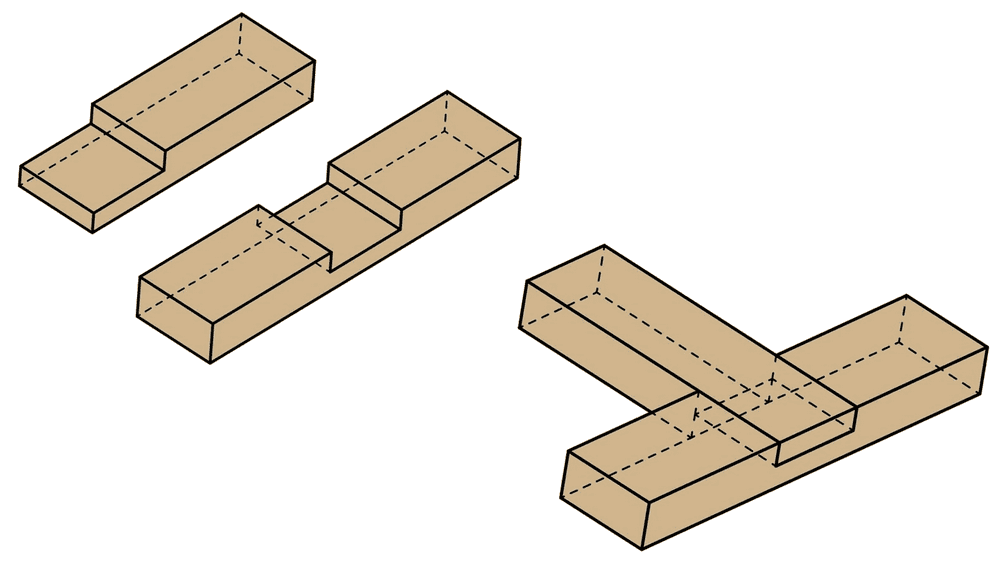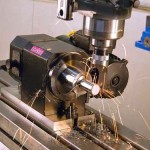Painting is done in two phases. First, the painters will apply the primer and putty. They will try to fill some of the cracks in the walls and smooth the surfaces. This step can be done almost at any time after the floor tiling is done. The main painting is done in the second phase. Here they further open up existing cracks, fill them up with lambi, do minor PoP finishing, and then do the painting. The actual painting is done in two coats and does not take very long.
Some Painting shop equipment
• Step ladders and extension ladders – to help you reach elevated areas.
• Paint scraper – to remove loose or peeling paint from wood, plaster, and other surfaces.
• Triangular-load scraper – to remove paint in small or tight areas.
• Steel wool – to remove corrosion from metal surfaces.
• Bristle brush – to clear loose material from masonry.
• Wire brush – to remove efflorescence and loose material from masonry, or to remove loose, flaking paint.
• Putty knife – to scrape away loose paint, or to apply filler.
• Sandpaper (various grits) – to smooth and feather previously painted surfaces, or to roughen glossy surfaces so the paint will adhere better.
• Caulking gun – to apply caulk to cracks in walls, gaps, and seams in woodwork, and the junction of different surfaces (e.g., wood siding and stone).
